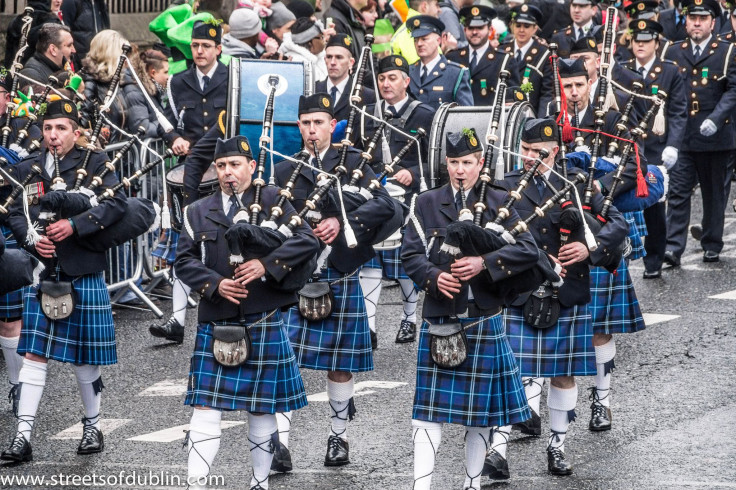St. Patrick’s Day 2015: Weeklong Celebrations In Ireland Marked By Feasts, Mass

In America, March 17 means pub crawls, parades, funny hats and lots and lots of green. In Ireland, whose patron saint, Patrick, the holiday commemorates, however, it’s not a single day of festivities but a whole week, and on the whole is a bit more serious than the lighthearted merriment Americans love.
In Ireland, St. Patrick's Day is a holy day that launches a weeklong celebration. The day itself is marked by family time and a feast, and mass is all but required, according to the website Ireland for Visitors. Drinking a pint or two that day would not be unusual, but it’s not a day of excess the way it can be across the Atlantic. Instead, the emphasis is on the family meal, where traditional foods might include pink bacon and roast chicken. Throughout the rest of the week, larger Irish cities, like Dublin, will often have parades and other events from street entertainment to concerts and children’s activities.
As one might guess, then, Ireland is not where modern American St. Paddy's Day celebrations originated. Rather, Irish immigrant communities in the United States in the 1700s were the ones that made March 17 what it is today. Although Ireland itself has celebrated the holiday as far back as the 800s, it wasn’t until 1903 that St. Patrick’s Day was declared an official public holiday there, the Telegraph said.
St. Patrick, the patron saint of Ireland, was born in the fourth century as Maewyn Succat, in Britain, then ruled by the Romans. As a 16-year-old, he was kidnapped and brought to Ireland to be a slave, eventually managing to escape but subsequently returning to Ireland as a missionary. Legend suggests he used a shamrock to explain the Holy Trinity. He died on March 17, 461, according to Encyclopedia Britannica, leaving behind a legacy of myths -- he drove snakes out of Ireland, says one -- and of course, St. Patrick’s Day.
© Copyright IBTimes 2024. All rights reserved.












